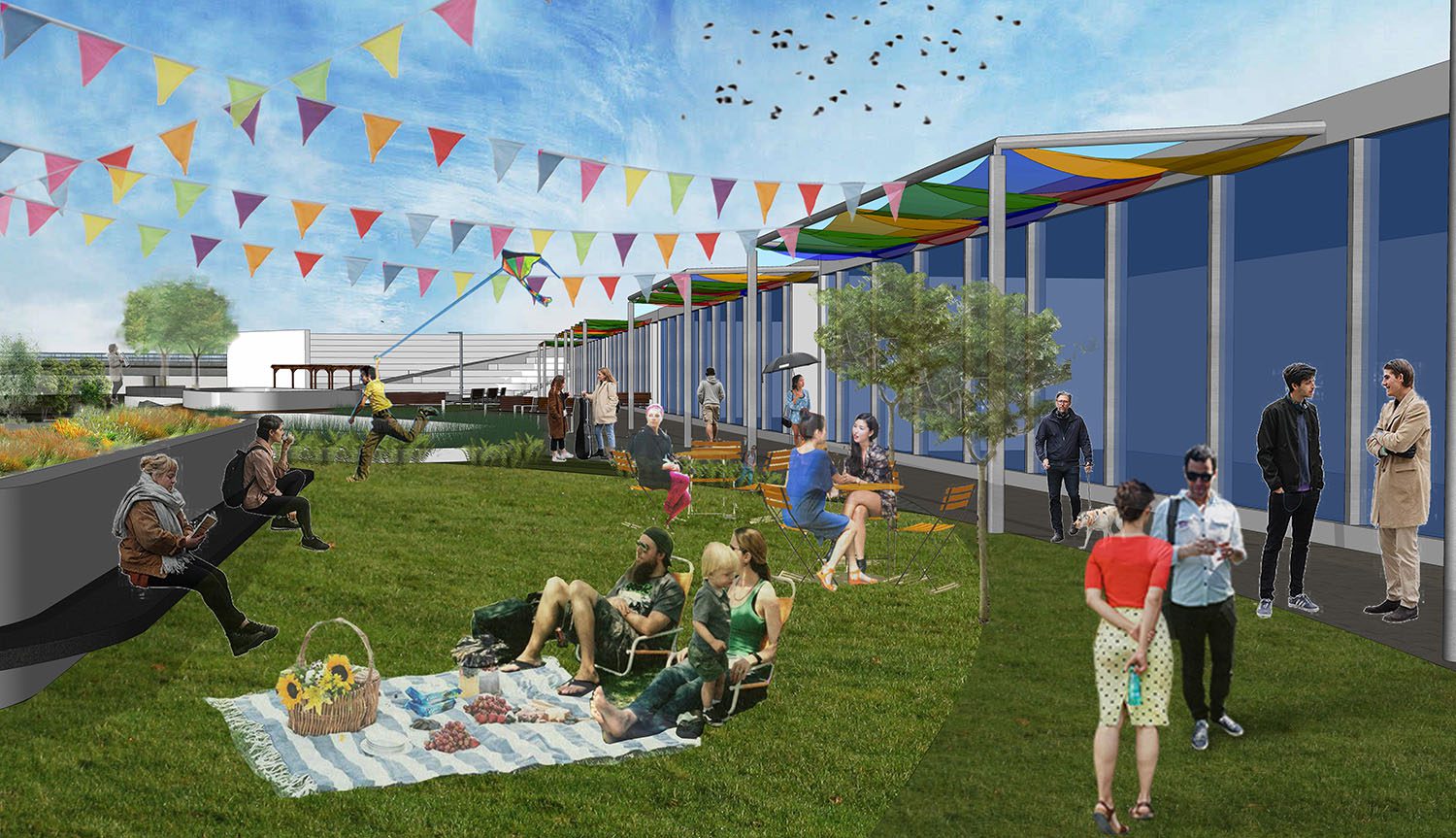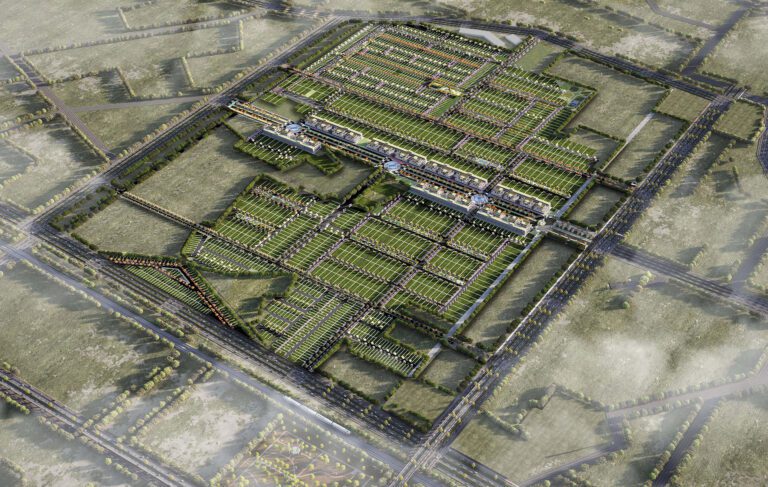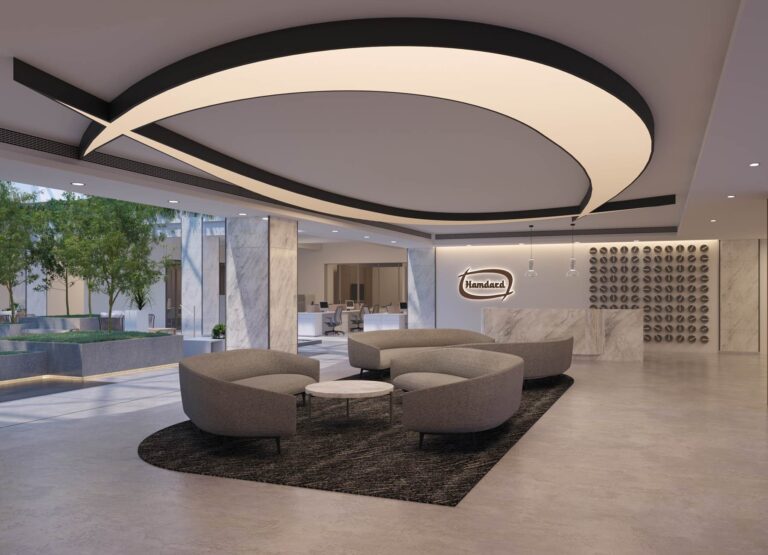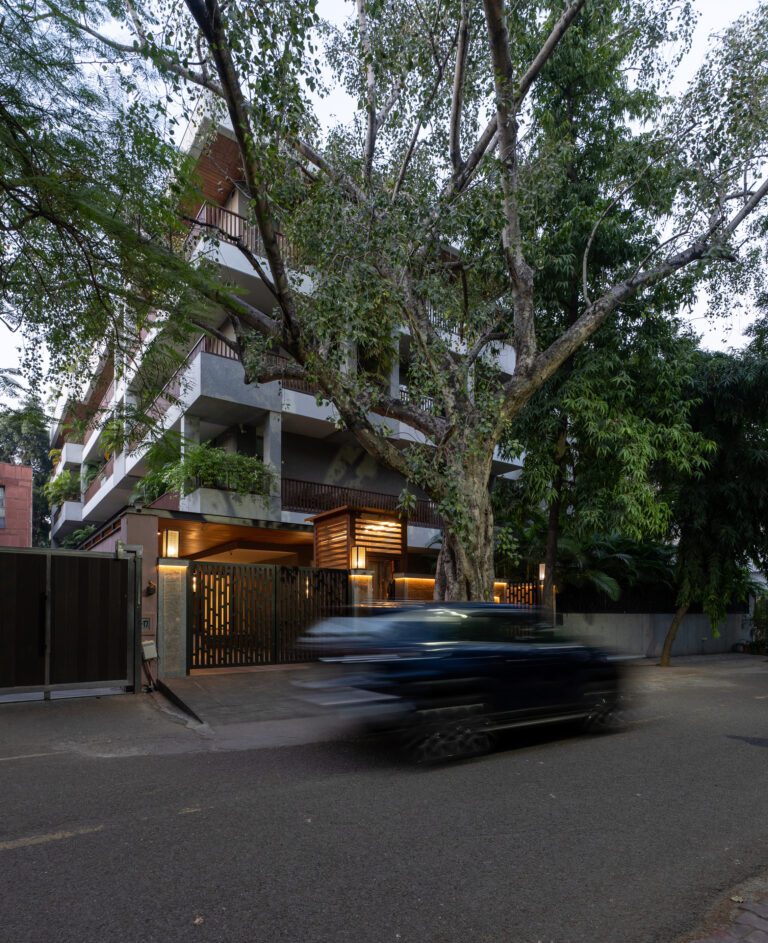Utsodhaara
Siliguri, West Bengal
Designing with the site, rather than on the site
Scope
Masterplanning
Typology
Mixed Use

The project aims to return the riverfront to the city
The Ambuja Utsodhaara Teesta is a township development in Siliguri, a major city in northern West Bengal. Located along the Mahananda River, the site is set amidst a lush natural landscape in a city, which is a major hub for trade with neighbouring cities. The Asian Highway, an important national connecting road, cuts the plot into two, as it passes over the Mahananda river. With a strong ecological and economic context, the Ambuja Utsodhaara Teesta township is a significant intervention comprising residential clusters, an urban infrastructure facility (UIF), four schools, extensive retail establishments and the development of the river promenade.
The master plan is derived from the location of the river and its natural water flow along the site. The UIF and the schools are proposed along the riverfront, with the face of the plot facing the river dedicated to public activities. Along the river, facilities like an auditorium, cultural centre, central library and sports amenities are planned, which are not only shared amongst the four schools, but also open to the rest of the city. The front of the UIF facing the river is developed as a vibrant public node with spaces such as pavilions, viewing decks, exhibition areas and other gathering spaces. This planning efficiently allows the segregation of the public leisure zones along the river and the commercial zones along the Asian Highway. High-end retail development is planned along this front by capitalising on the economic relevance of the highway.

Each residential cluster is designed to foster a dynamic community environment
Behind this commercial front, distanced from the main road, are different clusters of residential typologies, segregated according to size and function. The clusters are conceptualised as low-rise, low-density zones consisting of small and large villas, independent apartments and apartment housing. With variations in design and areas of private greens accorded to each plot, each cluster is designed to foster a dynamic community environment.

Heavy rains storm the city for a long rainy season of six months; therefore, green pockets are distributed across the site to retain maximum rainwater and yet avoid water-logging. Planned as per the natural slope of the site, these green pockets are depressed and have recharge wells in them. Following the water’s existing drainage channels, the excess rainwater is designed to flow toward the natural stream to the south of the plot. With a sensitive approach, the planning ensures that construction development does not disturb the present water ecology.
Conceptualised as an intervention highly sensitive to its context, the Ambuja Utsodhaara Teesta is a mindful development that is intrinsically sustainable and minimally intrusive to its environment. It works towards creating a plan that not only maximises the city’s economic potential but also respects the site conditions that it inhabits.






